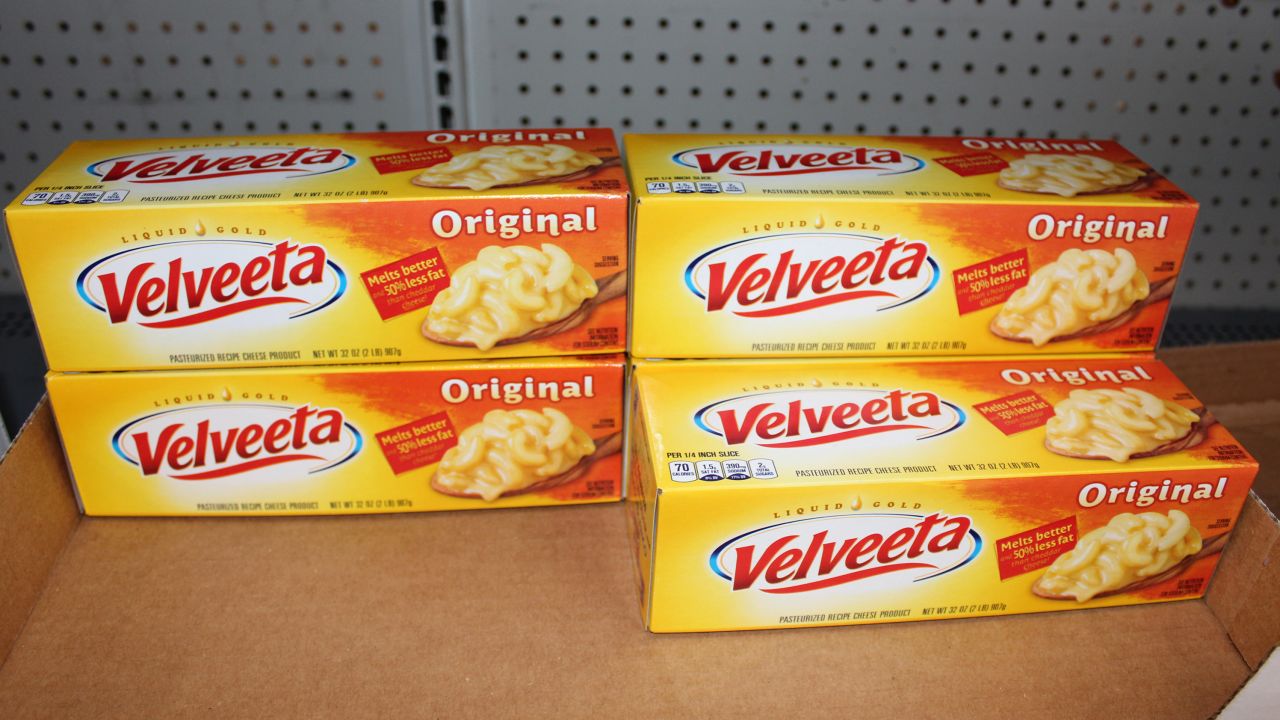

Articles
How To Store Cream Cheese
Modified: December 7, 2023
Learn the best methods for storing cream cheese in this informative article. Keep your cream cheese fresh for longer with these tips and tricks.
(Many of the links in this article redirect to a specific reviewed product. Your purchase of these products through affiliate links helps to generate commission for Storables.com, at no extra cost. Learn more)
Introduction
Cream cheese is a versatile and delicious ingredient that is widely used in both savory and sweet dishes. Whether you are a cream cheese enthusiast or someone who enjoys an occasional spread, it’s important to know how to store cream cheese properly to maintain its freshness and quality.
In this article, we will guide you through the best practices for storing cream cheese, including tips for unopened and opened cream cheese, as well as the option of freezing it for extended storage. By following these guidelines, you can ensure that your cream cheese stays fresh and ready to use whenever you need it.
Key Takeaways:
- Properly storing cream cheese is crucial for maintaining its freshness and quality. Whether unopened or opened, following the right storage techniques can extend its shelf life and prevent spoilage.
- When choosing cream cheese, consider factors such as expiration date, quality packaging, and fat content. These factors can impact the cream cheese’s storage requirements and shelf life.
Read more: How To Store A Bagel With Cream Cheese
Choosing the Right Cream Cheese
When it comes to selecting cream cheese, there are a few factors to consider that can affect its shelf life and storage requirements. Here are some things to keep in mind:
- Check the expiration date: Always check the expiration date before purchasing cream cheese. Choose the one with the longest shelf life to give you ample time for storage and usage.
- Look for quality packaging: Opt for cream cheese that comes in a well-sealed container. This helps to prevent any air or moisture from entering the packaging, which can lead to spoilage.
- Consider the fat content: Cream cheese comes in different varieties, such as regular, reduced-fat, and fat-free. Keep in mind that the higher the fat content, the shorter the shelf life. Fat-free cream cheese tends to have the longest shelf life.
By carefully choosing the right cream cheese and ensuring its quality, you set yourself up for better storage outcomes.
Unopened Cream Cheese Storage
When it comes to storing unopened cream cheese, it’s relatively straightforward. Follow these guidelines to keep the cream cheese fresh and safe for consumption:
- Keep it refrigerated: Unopened cream cheese should always be stored in the refrigerator. The ideal temperature range for refrigerating cream cheese is between 35°F and 40°F (1.7°C and 4.4°C). Make sure to place the cream cheese in the main compartment of the refrigerator, away from any raw meat or fish to prevent cross-contamination.
- Leave it in its original packaging: It’s best to leave the cream cheese in its original packaging until you’re ready to use it. The packaging is designed to protect the cream cheese from external elements and keep it fresh.
- Avoid temperature fluctuations: Try to avoid drastic temperature changes, as this can impact the quality and texture of the cream cheese. Keep the temperature of your refrigerator consistent to maintain the optimal conditions for storing cream cheese.
By following these storage guidelines, unopened cream cheese can maintain its freshness for the duration specified on the package. It is important to note that the storage time may vary depending on the manufacturer, so always refer to the expiration date as a guide.
Opened Cream Cheese Storage
Once you have opened the package of cream cheese, proper storage becomes even more crucial to maintain its quality and prevent spoilage. Here are some guidelines to follow:
- Wrap it tightly: After opening the cream cheese, wrap it tightly in plastic wrap or place it in an airtight container. This helps to prevent air and moisture from getting in and keeps the cream cheese from drying out.
- Refrigerate promptly: Make sure to refrigerate the opened cream cheese promptly after each use. Leaving it at room temperature for an extended period can lead to bacterial growth and spoilage.
- Use within two weeks: Opened cream cheese is best consumed within two weeks. While it may still be safe to eat after this time, the quality and texture may begin to deteriorate.
If you notice any unusual odor, discoloration, or mold growth on the cream cheese, it should be discarded immediately, as these are signs of spoilage.
Remember, maintaining proper hygiene while handling the cream cheese is essential. Always use clean utensils and avoid double-dipping to prevent the introduction of bacteria that can lead to contamination.
By following these storage recommendations, you can extend the shelf life of opened cream cheese and enjoy it while it’s at its best.
Store cream cheese in its original packaging or an airtight container in the refrigerator. Make sure to keep it away from strong-smelling foods to prevent absorption of odors.
Freezing Cream Cheese
If you find yourself with excess cream cheese or want to stock up for later use, freezing can be a viable option. However, it’s important to note that freezing can affect the texture of cream cheese, so it may not be suitable for all culinary applications. Here’s how you can freeze cream cheese:
- Prepare for freezing: If the cream cheese is still in its original packaging, you can freeze it as is. However, if it has been opened, it’s recommended to divide it into smaller portions for easier thawing and usage.
- Wrap it properly: To prevent freezer burn and maintain the quality of the cream cheese, wrap it tightly in plastic wrap or place it in a freezer-safe container. Make sure there are no air pockets to minimize the risk of ice crystals forming.
- Label and date: Don’t forget to label the packaging with the date of freezing to keep track of its storage time.
- Freeze it: Place the wrapped cream cheese in the freezer, keeping it away from strong-smelling foods to prevent any flavor absorption.
When you’re ready to use the frozen cream cheese, it’s important to thaw it properly. Transfer the frozen cream cheese to the refrigerator and allow it to thaw slowly for several hours or overnight. Avoid microwaving or using hot water to thaw cream cheese, as this can affect its texture.
After thawing, the cream cheese may be slightly softer and may not have the same consistency as fresh cream cheese. Therefore, it is best suited for recipes or dishes where the texture is less critical, such as baking, cooking, or blending into dips and spreads.
Keep in mind that frozen cream cheese should be used within three months for the best quality and taste. It’s always a good idea to check for any signs of spoilage before consuming.
By following these freezing and thawing guidelines, you can safely store cream cheese for longer periods and reduce food waste.
Tips for Proper Cream Cheese Storage
To ensure optimal freshness and quality of cream cheese, here are some additional tips for proper storage:
- Avoid exposing cream cheese to direct sunlight or heat, as this can cause the texture to change and increase the risk of spoilage. Store it in a cool and dry place, such as the refrigerator.
- Keep cream cheese away from strong-smelling foods in the refrigerator. Cream cheese tends to absorb odors easily, which can affect its flavor.
- If you have leftover cream cheese that you won’t be able to use within the recommended storage timeframe, consider freezing it in portion-sized portions for later use.
- Always use clean utensils when handling cream cheese to prevent any bacterial contamination.
- If you prefer a softer consistency for spreading, you can leave the cream cheese at room temperature for a brief period before using it. However, do not exceed two hours to prevent any health risks.
- Regularly check the expiration date and discard cream cheese that has expired or shows signs of spoilage, such as a foul odor, mold growth, or discoloration.
By following these tips, you can maximize the shelf life and maintain the quality of your cream cheese, ensuring that it is always fresh and ready for your culinary creations.
Conclusion
Properly storing cream cheese is essential for maintaining its freshness, texture, and taste. Whether it is unopened or opened cream cheese, following the right storage techniques can help extend its shelf life and prevent spoilage.
When choosing cream cheese, consider factors such as expiration date, quality packaging, and fat content. These factors can impact the cream cheese’s storage requirements and shelf life.
Unopened cream cheese should be refrigerated at a consistent temperature and kept in its original packaging until ready to use. This helps to preserve its freshness and quality.
Opened cream cheese should be tightly wrapped and stored in the refrigerator after each use. It is best consumed within two weeks, but always check for signs of spoilage before consuming.
If you have excess cream cheese or want to stock up, freezing is an option. However, keep in mind that the texture may change, and it is best suited for recipes where texture is less critical.
Lastly, follow the tips for proper cream cheese storage, including avoiding direct sunlight, keeping it away from strong-smelling foods, and using clean utensils for handling.
By implementing these storage guidelines, you can ensure that your cream cheese stays fresh and delicious for as long as possible, allowing you to enjoy its creamy goodness in your favorite dishes and spreads.
Frequently Asked Questions about How To Store Cream Cheese
Was this page helpful?
At Storables.com, we guarantee accurate and reliable information. Our content, validated by Expert Board Contributors, is crafted following stringent Editorial Policies. We're committed to providing you with well-researched, expert-backed insights for all your informational needs.















0 thoughts on “How To Store Cream Cheese”